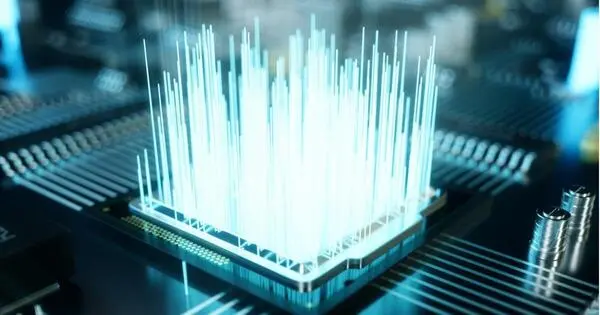Transistor lasers are semiconductor devices that work like transistors but have an electrical output and an optical output rather than the usual two electrical outputs. It is a semiconductor device that integrates the capabilities of a transistor and a laser into a single integrated structure. This optical output distinguishes it from standard transistors and, because optical impulses move faster than electrical signals, has the potential to greatly accelerate computation.
This gadget is intended to amplify and control electrical impulses (similar to a transistor) while also producing coherent light (similar to a laser). To better characterize the behavior of simultaneous optical and electrical output, the researchers who discovered the transistor laser created a new model of Kirchhoff’s current equation.
Discovery
The transistor laser was discovered by a team led by Milton Feng and Nick Holonyak, Jr. at the University of Illinois at Urbana-Champaign. After Feng and Holonyak invented the first light-emitting transistor in 2004, they began researching the transistor laser.
The light-emitting transistor was subsequently tweaked by Feng and his team to focus the light it produced into a laser beam. DARPA provided funding for their research. The publication regarding the transistor laser’s discovery was named one of the top five papers in the history of Applied Physics Letters, and the transistor laser was named one of the top 100 discoveries by Discover.
How it works
The operation of a transistor laser is based on the interaction between electrons and photons within a semiconductor material, typically a compound semiconductor like gallium arsenide (GaAs) or indium phosphide (InP). Here’s a simplified explanation of how it works:
- Gain Region: The heart of the transistor laser is a gain region, which is typically a thin layer of semiconductor material doped with specific impurities. This region allows for the controlled release of photons when electrons recombine with holes. It acts as the active medium for lasing.
- Base Region: The transistor laser, like a typical transistor, contains a base area that regulates the flow of charge carriers (electrons and holes). By adding a voltage to the base area, you may regulate the carrier concentration in the gain region, which in turn modulates the laser output.
- Emitter Region: The emitter zone is where the laser light is emitted. When the electron-hole recombination mechanism is stimulated, coherent light is emitted. The emitted light can be adjusted by adjusting the base region.
Transistor lasers are of interest for a variety of applications, including optical communication and optical signal processing. They enable the integration of optical and electronic components on a single chip, resulting in faster and more efficient data transmission and processing.
















